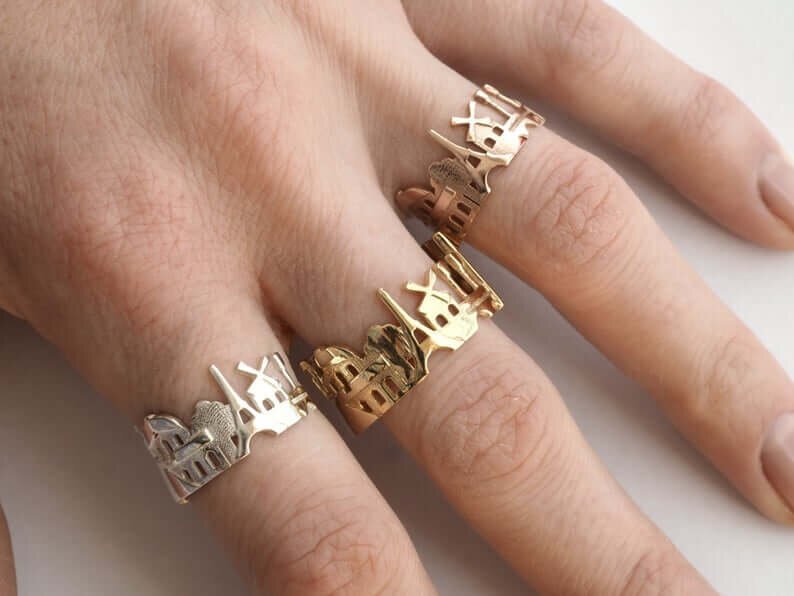What is 3D Printed Jewelry
As technically complicated and scientific as “3D printed jewelry” sounds, it is also as aesthetically charming. Put simply, it means creating a 3D model of a design from its digital model with the use of modern and cutting-edge 3D printers. This modern innovation has brought about a revolution in the making of jewelry, disrupting age-old jewelry carving practices.
Traditionally, the jewelry design is hand-carved in wax, then placed in a mold to be heated to extreme temperatures, and then precious metals like gold or silver are poured into the mold cavity to create the cast piece. Designers further polish the piece thereby giving it human precision and finishing. This method is called lost wax casting and is as old as 3500 BC!
With 3D printing, designers print a 3D model of their design created using digital software like CAD. The model is then encased in the plaster like substance called investment and burned out to create an impression for the precious metals to be poured into. This is the indirect method of 3D printing. There is also the direct method requiring more advanced and expensive technology which allows the jewelry to be printed directly. 3D printed jewelry is available in gold, brass, silver, copper and various other metals.
3D printing has gained immense appreciation for offering several benefits to both jewellers and clients.
If you’ve ever wanted to customize jewelry in a way that was too strenuous for hand craftsmanship, 3D printing is at your rescue. It allows for absolute freedom, unrestrained creativity and easier collaboration. You can have all your ideas printed into actual jewelry, even the complicated ones. There are no limits to the patterns that 3D printers can bring life to. Designer of cityscape rings, Ola Shekhtman shares, “Details rule! Customers adore buildings with columns and tiny statues, which I create in 3D software. It is tricky to pierce windows [by hand] and 3D lets me make it easily.”
3D printing saves time and makes mass production easier. Recently, it has become less expensive and easier to operate, courtesy of new technology, which has enlarged its base to small and independent designers. Shekhtman shares, “To make 1000 rings by hand I would spend nearly 100 years. Using 3D modeling I can make a city once and it is available to order in any quantity, forever, which frees me up for new designs.” 3D files can also be easily edited, leading to less wastage and making it more sustainable.
The heaviness of the jewelry and the material used can be controlled in the case of 3D printed jewelry. In literally everything from the intricacies of the design to the fill, 3D printing gives you 100% control over your piece.
There are definitely hesitations concerning the adoption of 3D printing in the jewelry industry because of the lack of resources or skillset, but with the emergence of cheaper and convenient printers, its scope is far-reaching and its future is promising.
Dive deeper into the world of jewelry
Be sure to visit the blog. Get fascinating insights straight from experts around the world and pick up secret tips to make jewelry shopping a breeze.





Jewelry hallmarks are small symbols or markings stamped on pieces of jewelry that provide important information about its composition, authenticity, and quality. Here is a guide to help you decipher jewelry hallmarks and understand what they mean.